Tom's Hardware Verdict
The PNY XLR8 Gaming Mako DDR5-6200 C42 isn't the fastest memory on the market, but it'll get the job done.
Pros
- +
Low-profile design
- +
Multiple XMP 3.0 profiles
Cons
- -
Loose timings
- -
Expensive
Why you can trust Tom's Hardware
PNY has created the Mako memory series under its XLR8 Gaming sub-brand. The XLR8 Gaming Mako family, which borrows inspiration from the shortfin mako shark, arrives in standard and RGB versions and comes in both DDR5-6000 and DDR5-6300 flavors.
DDR5 pricing has improved significantly compared to when the new memory standard debuted. However, prices will continue to decline as we head into next year, so it's no surprise to see more value-oriented kits cropping up.
For now, the Mako series is the only enthusiast-grade DDR5 offering available from PNY, and it's only available at 32GB (2x16GB). In addition, the company has only listed DDR5-6000 and DDR5-6200 kits. However, the company's press release stated that the Mako would go up to DDR5-6400, so we may see another kit come to market soon.
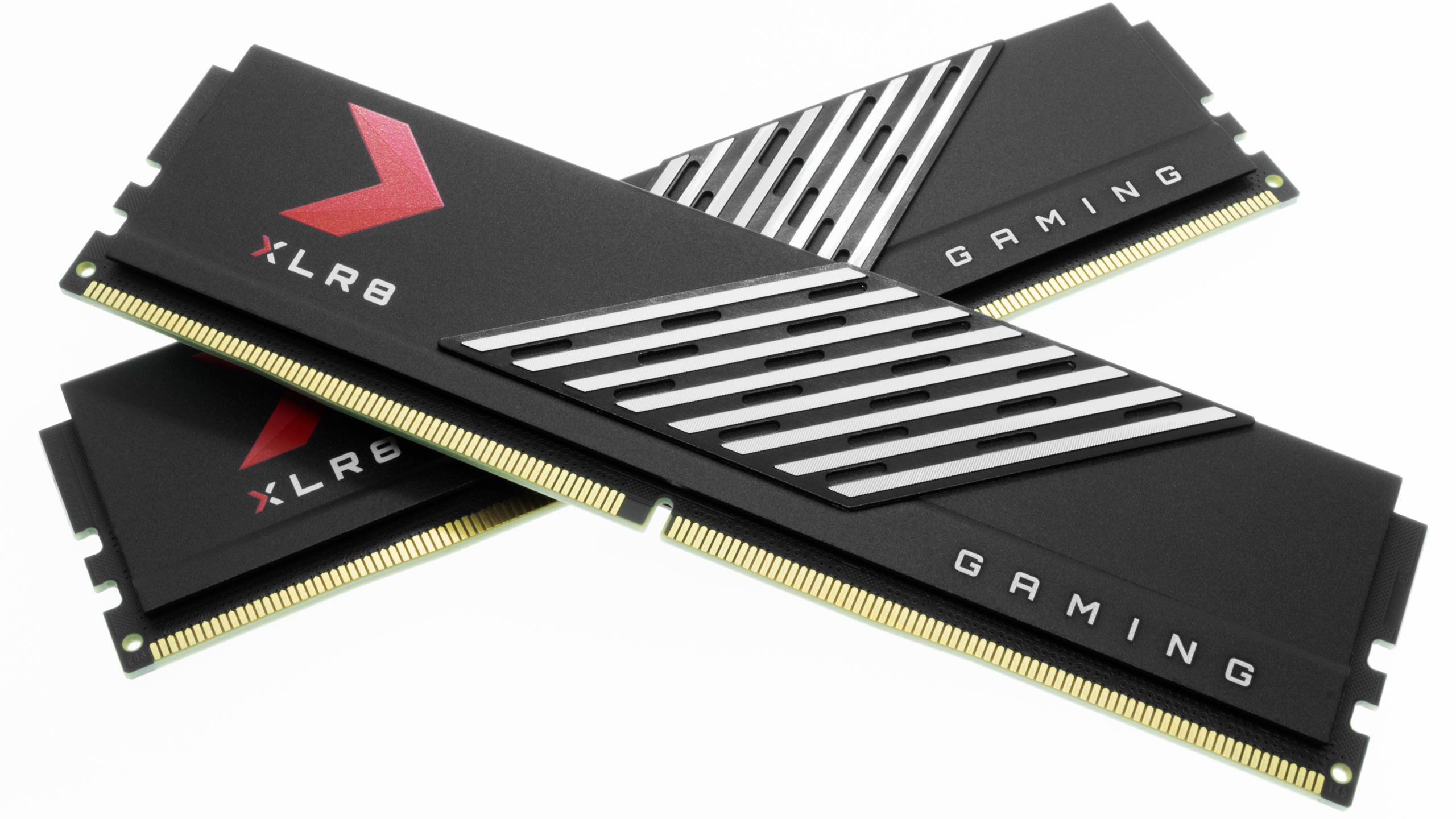
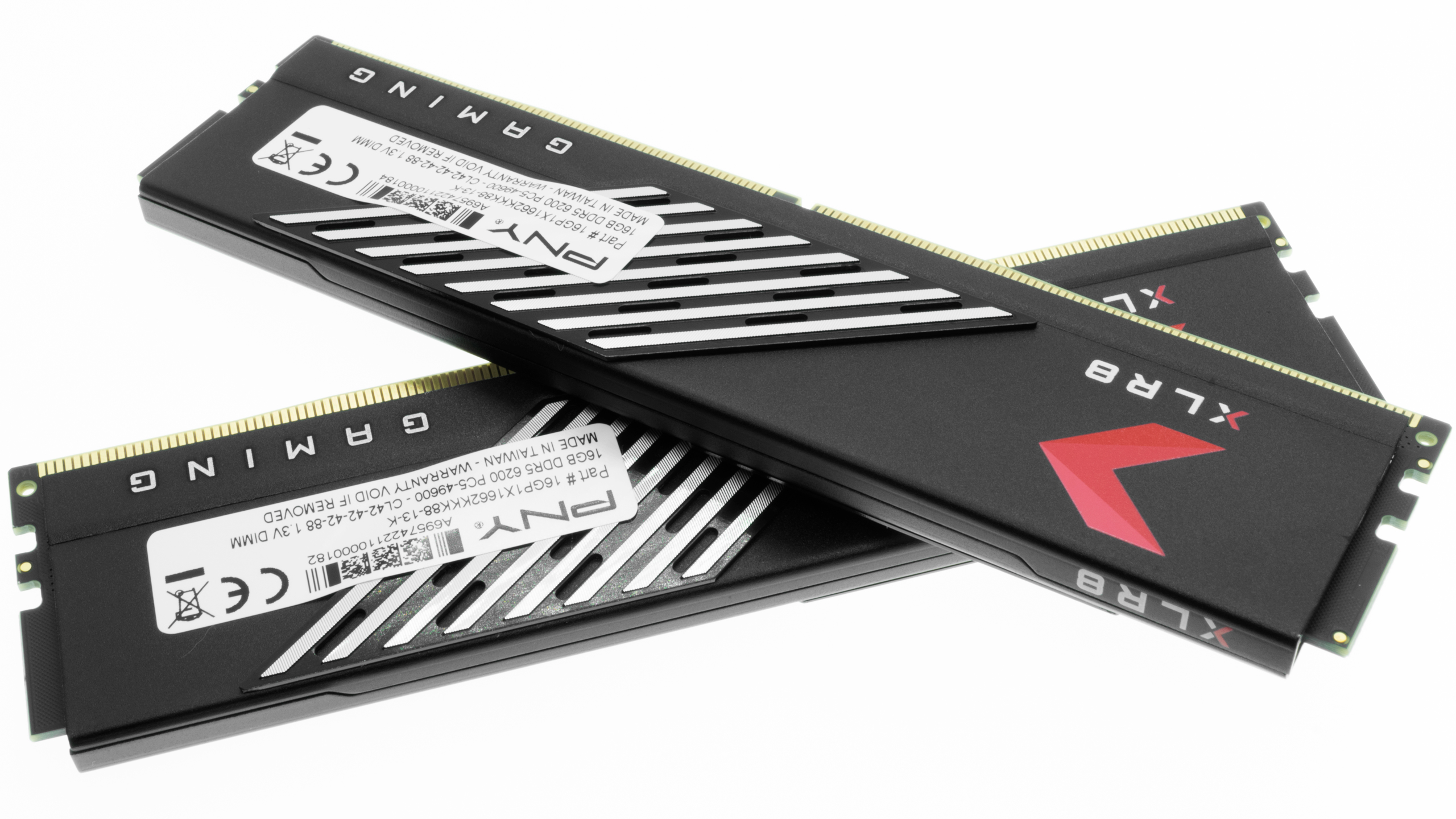

PNY's Mako memory modules sport an aluminum heat spreader that provides passive cooling to the integrated circuits (ICs) and power management IC (PMIC). The heat spreader only comes in black with a couple of diagonal silver lines to enhance the overall design. In addition, the company implanted the brand's XLR8 and Mako logos on both sides of the modules.
The memory modules cater to builds where clearance space is a luxury, so the heat spreader is designed to be compact. As a result, the modules conform to a low-profile design with a height of 34.8mm (1.37 inches). For comparison, generic DDR5 memory measures 31.15mm (1.23 inches), so the Mako is only 11.7% taller.
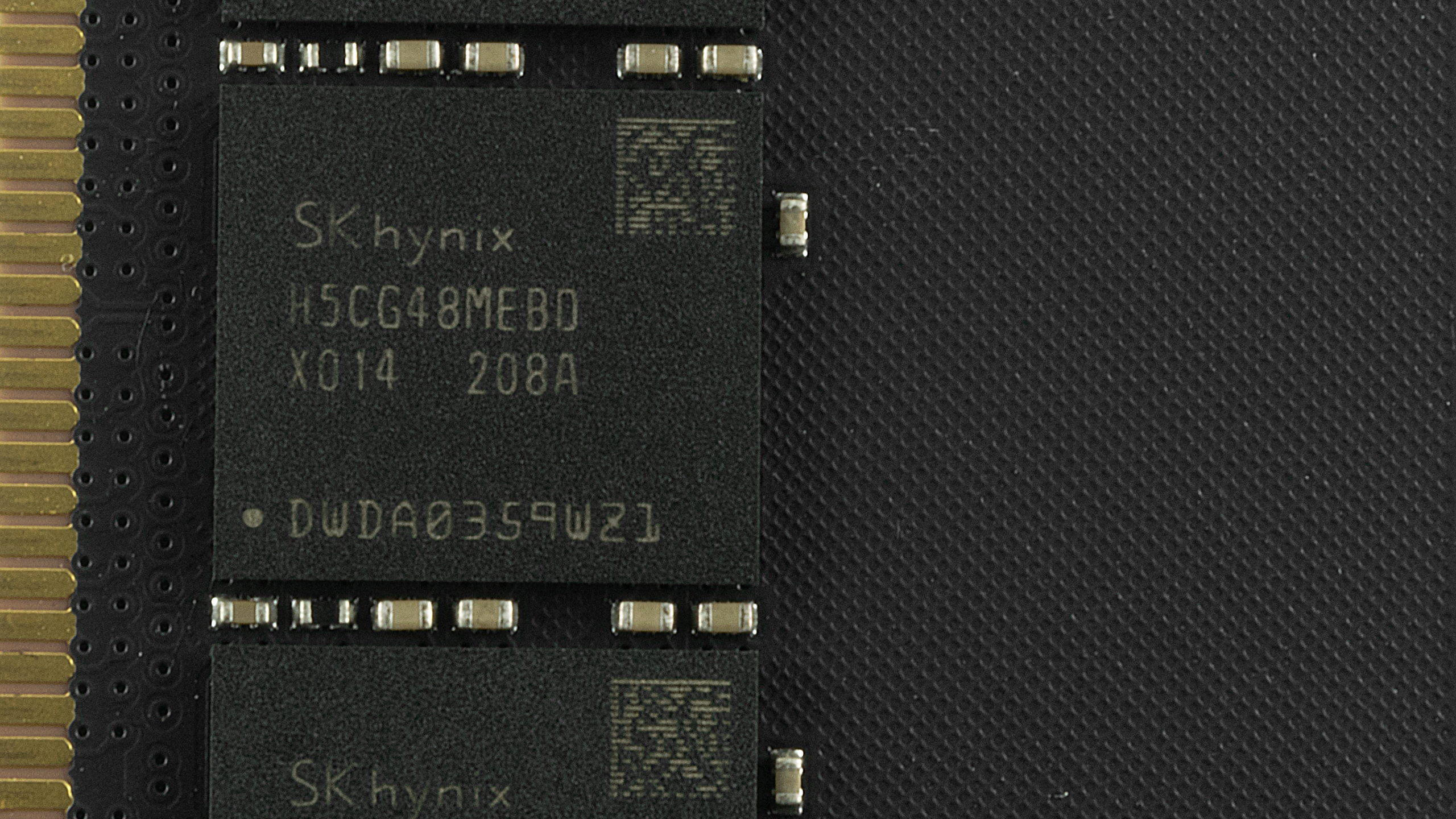

Each Mako memory module has a capacity of 16GB; therefore, it features a single-rank design. PNY uses SK hynix H5CG48MEBDX014 (M-die) ICs for the memory module. Meanwhile, Richtek's "0D=8J 20H" PMIC handles the voltage regulation.
The memory posts at DDR5-4800 at 40-40-40-76 timings. It has an abundant amount of XMP 3.0 profiles. The main profile gets the memory to DDR5-6200, 42-42-42-88, and 1.3V. The alternate profiles configure the Mako to run at DDR5-5600, 40-40-40-77, and 1.2V and DDR5-4800, 38-38-38-77, and 1.1V.
See our PC Memory 101 feature and How to Shop for RAM story for more on timings and frequency considerations.
Comparison Hardware
| Memory Kit | Part Number | Capacity | Data Rate | Primary Timings | Voltage | Warranty |
|---|---|---|---|---|---|---|
| Corsair Dominator Platinum RGB DDR5 | CMT32GX5M2X6600C32 | 2 x 16GB | DDR5-6600 (XMP) | 32-39-39-76 (2T) | 1.40 | Lifetime |
| G.Skill Trident Z5 RGB | F5-6400J3239G16GX2-TZ5RK | 2 x 16GB | DDR5-6400 (XMP) | 32-39-39-102 (2T) | 1.40 | Lifetime |
| V-Color Manta XPrism | TMXPL1662836WW-DW | 2 x 16GB | DDR5-6200 (XMP) | 36-39-39-76 (2T) | 1.30 | Lifetime |
| Patriot Viper Venom RGB | PVVR532G620C40K | 2 x 16GB | DDR5-6200 (XMP) | 40-40-40-76 (2T) | 1.35 | Lifetime |
| PNY XLR8 Gaming Mako | MD32GK2D5620042MXR | 2 x 16GB | DDR5-6200 (XMP) | 42-42-42-88 (2T) | 1.30 | Lifetime |
| G.Skill Trident Z5 RGB | F5-6000U3636E16GX2-TZ5RS | 2 x 16GB | DDR5-6000 (XMP) | 36-36-36-76 (2T) | 1.30 | Lifetime |
| Corsair Vengeance RGB DDR5 | CMH32GX5M2D6000C36 | 2 x 16GB | DDR5-6000 (XMP) | 36-36-36-76 (2T) | 1.35 | Lifetime |
| TeamGroup T-Force Delta RGB | FF3D516G6000HC40ABK | 2 x 16GB | DDR5-6000 (XMP) | 40-40-40-80 (2T) | 1.35 | Lifetime |
| Corsair Dominator Platinum RGB DDR5 | CMT32GX5M2B5200C38 | 2 x 16GB | DDR5-5200 (XMP) | 38-38-38-84 (2T) | 1.25 | Lifetime |
| Kingston Fury Beast | KF552C40BBK2-32 | 2 x 16GB | DDR5-5200 (XMP) | 40-40-40-80 (2T) | 1.25 | Lifetime |
| Crucial | CT2K8G48C40U5 | 2 x 8GB | DDR5-4800 | 40-39-39-77 (2T) | 1.10 | Lifetime |
| Sabrent Rocket | SB-DR5U-16G x 2 | 2 x 16GB | DDR5-4800 | 40-40-40-76 (2T) | 1.10 | 5 Years |
Our DDR5 test system has Intel's Core i9-12900K Alder Lake processor with Corsair's CUE H100i Elite LCD liquid cooler taking care of the cooling. The 16-core Alder Lake flagship chip sits on the MSI MEG Z690 Unify-X motherboard, running the 7D28vA8 firmware. In addition, the MSI GeForce RTX 2080 Ti Gaming Trio is responsible for our gaming RAM benchmarks.
Get Tom's Hardware's best news and in-depth reviews, straight to your inbox.
Our Windows 11 installation, benchmarking software, and games reside on Crucial's MX500 SSDs, whereas the RM650x feeds our entire system with the necessary power. Lastly, the Streacom BC1 open bench table ensures that our hardware is well-kept and tidy.
| Header Cell - Column 0 | Intel DDR5 System |
|---|---|
| Processor | Intel Core i9-12900K |
| Motherboard | MSI MEG Z690 Unify-X |
| Graphics Card | MSI GeForce RTX 2080 Ti Gaming X Trio |
| Storage | Crucial MX500 500GB, 2TB |
| Cooling | Corsair iCUE H100i Elite LCD |
| Power Supply | Corsair RM650x 650W |
| Case | Streacom BC1 |
Intel Performance
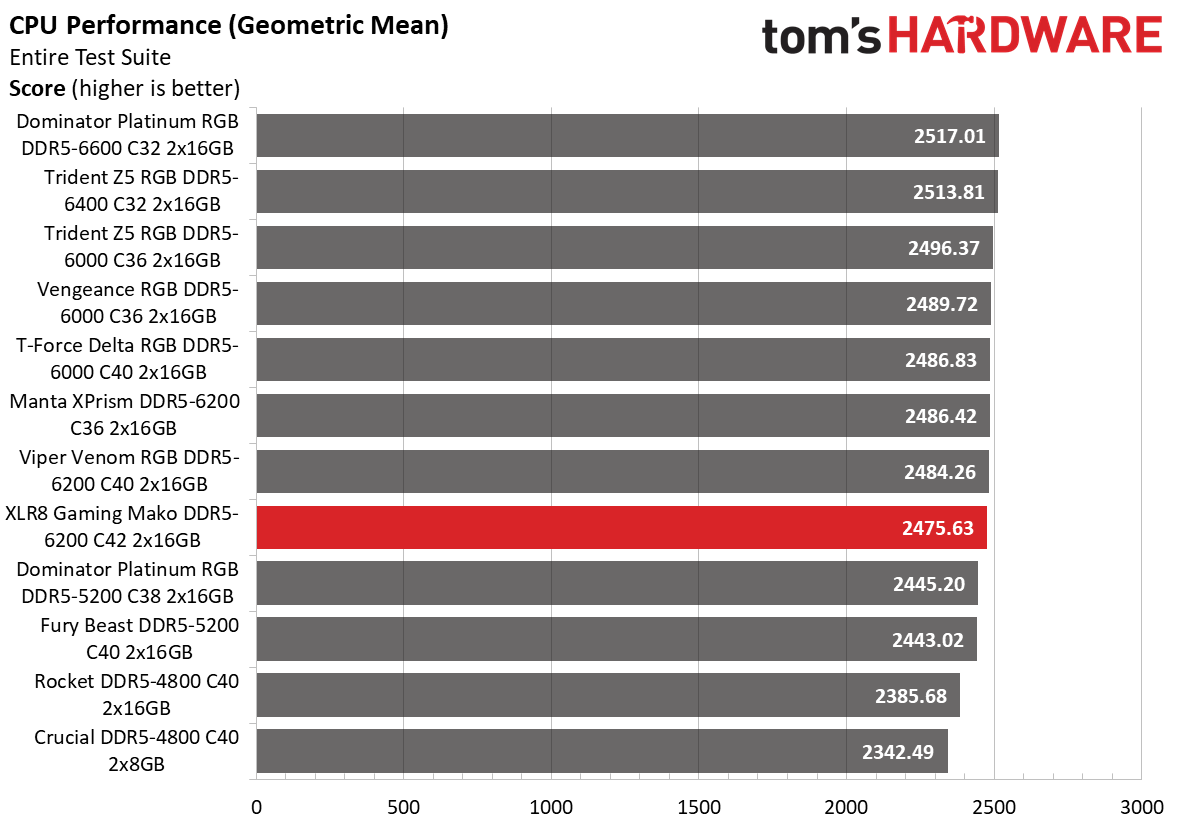
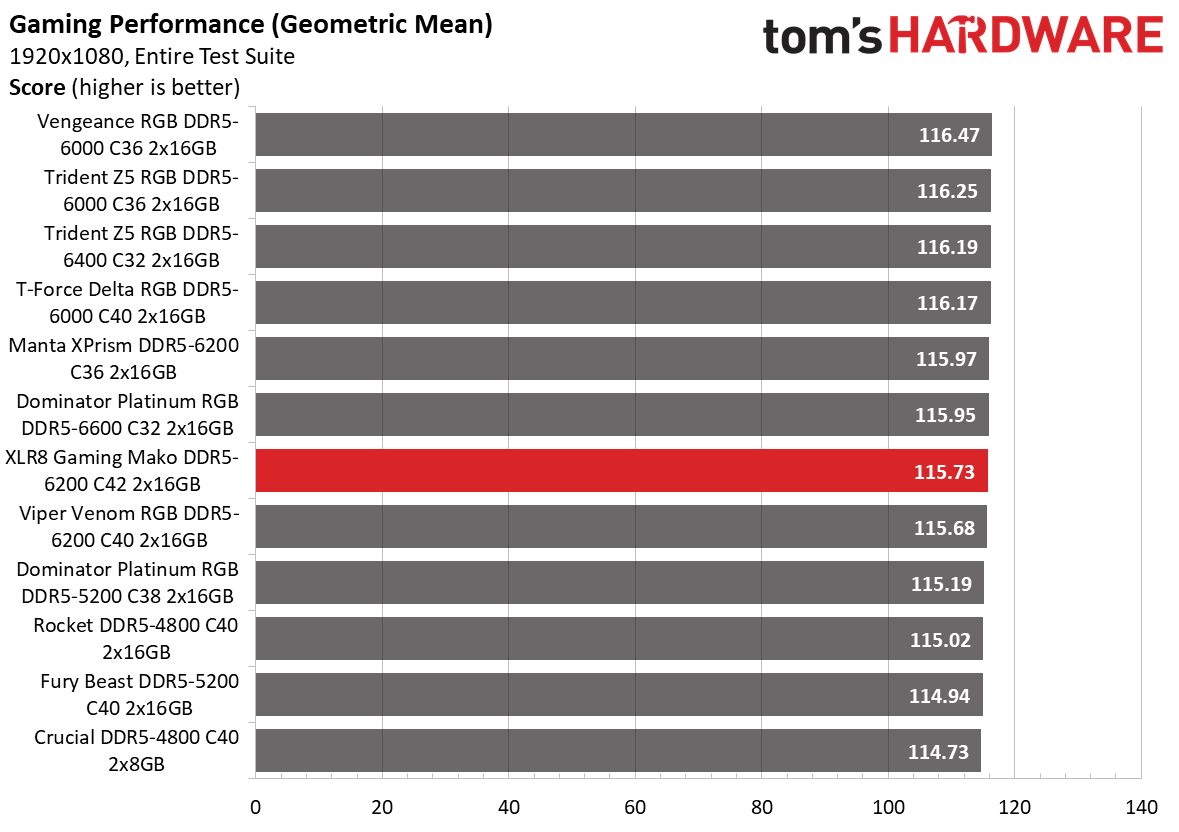






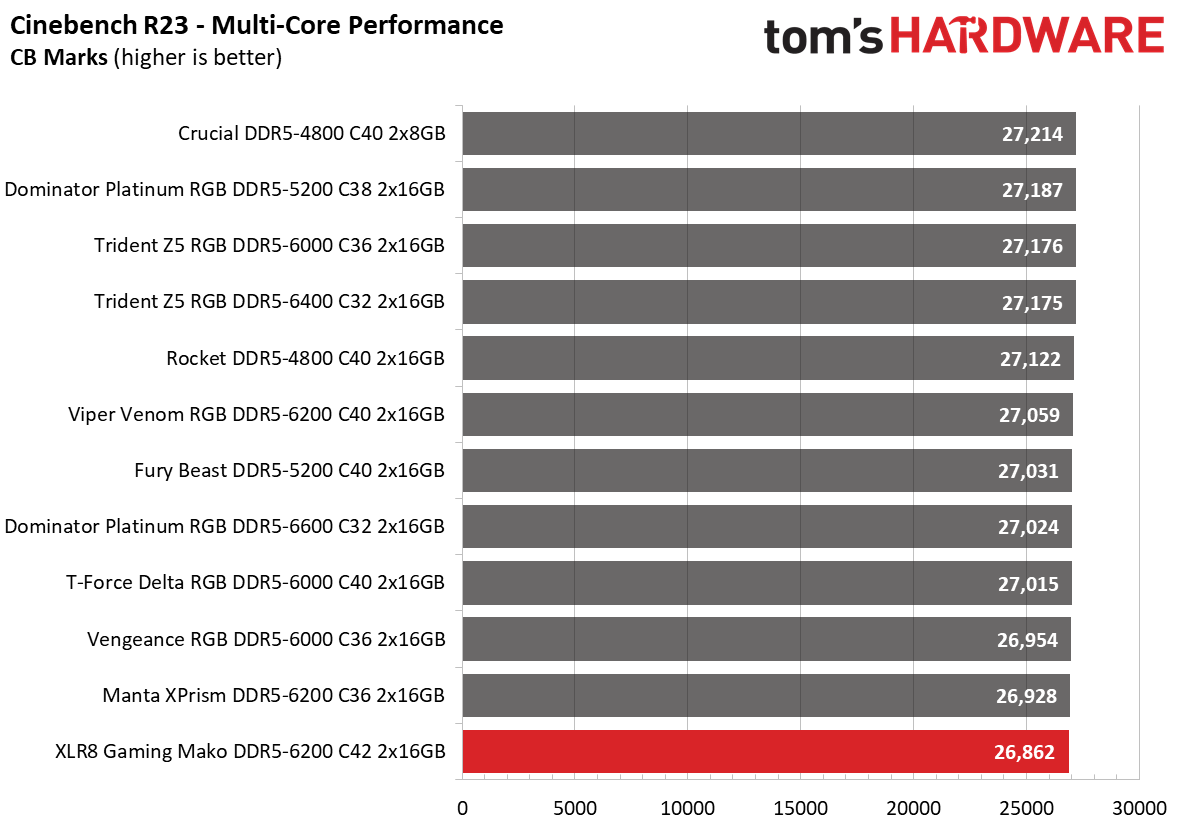










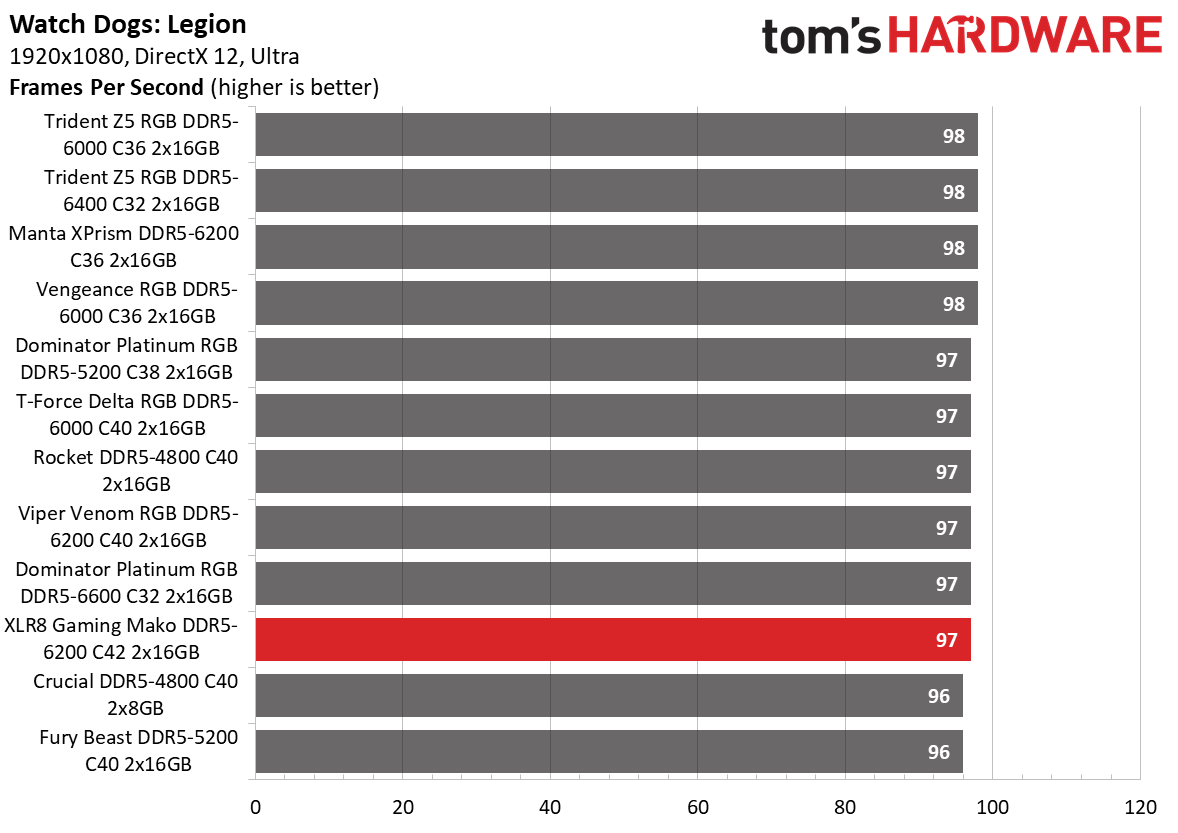
The XLR8 Gaming Mako DDR5-6200 C42 lagged slightly behind the Viper Venom RGB DDR5-6200 C40 due to the latter's tighter memory timings. However, logically, the PNY memory kit delivered higher performance than the standard DDR5-4800 and DDR5-5200 memory kits.
Overclocking and Latency Tuning

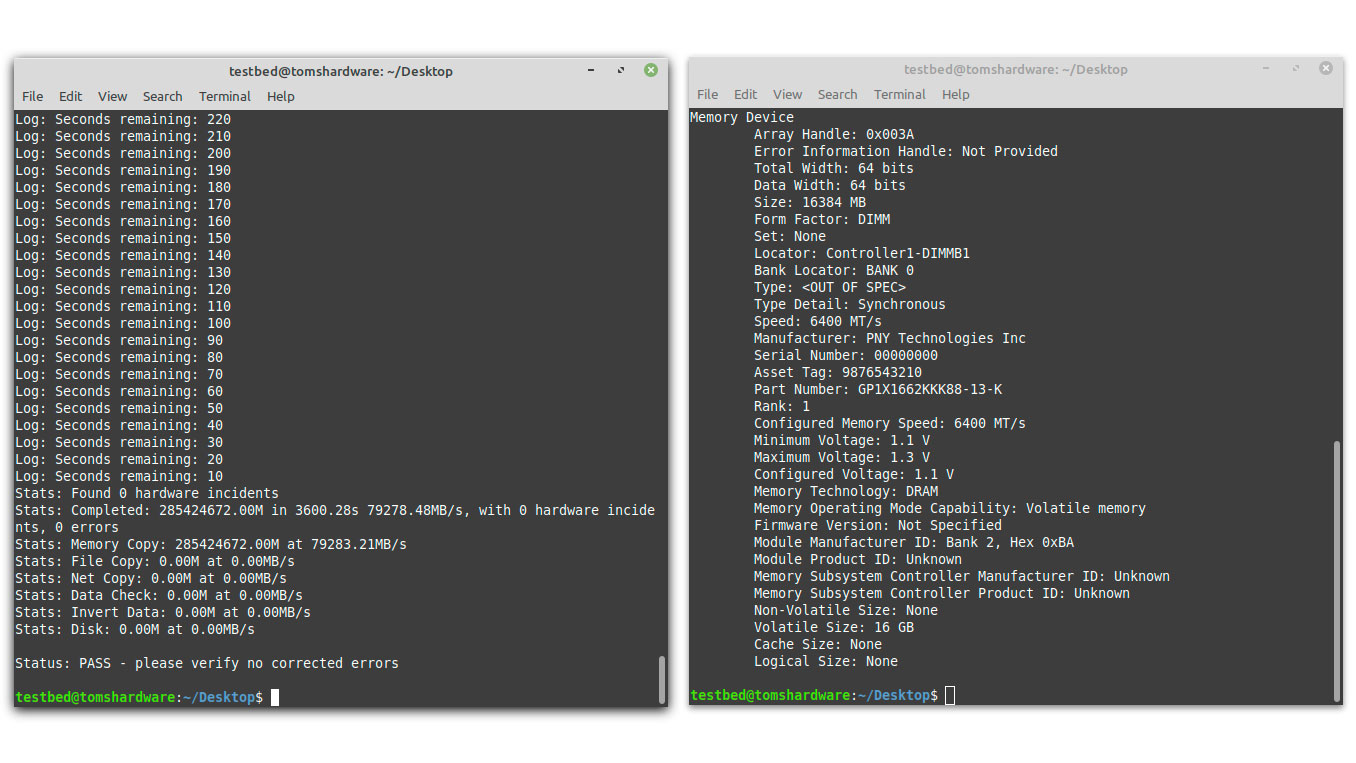
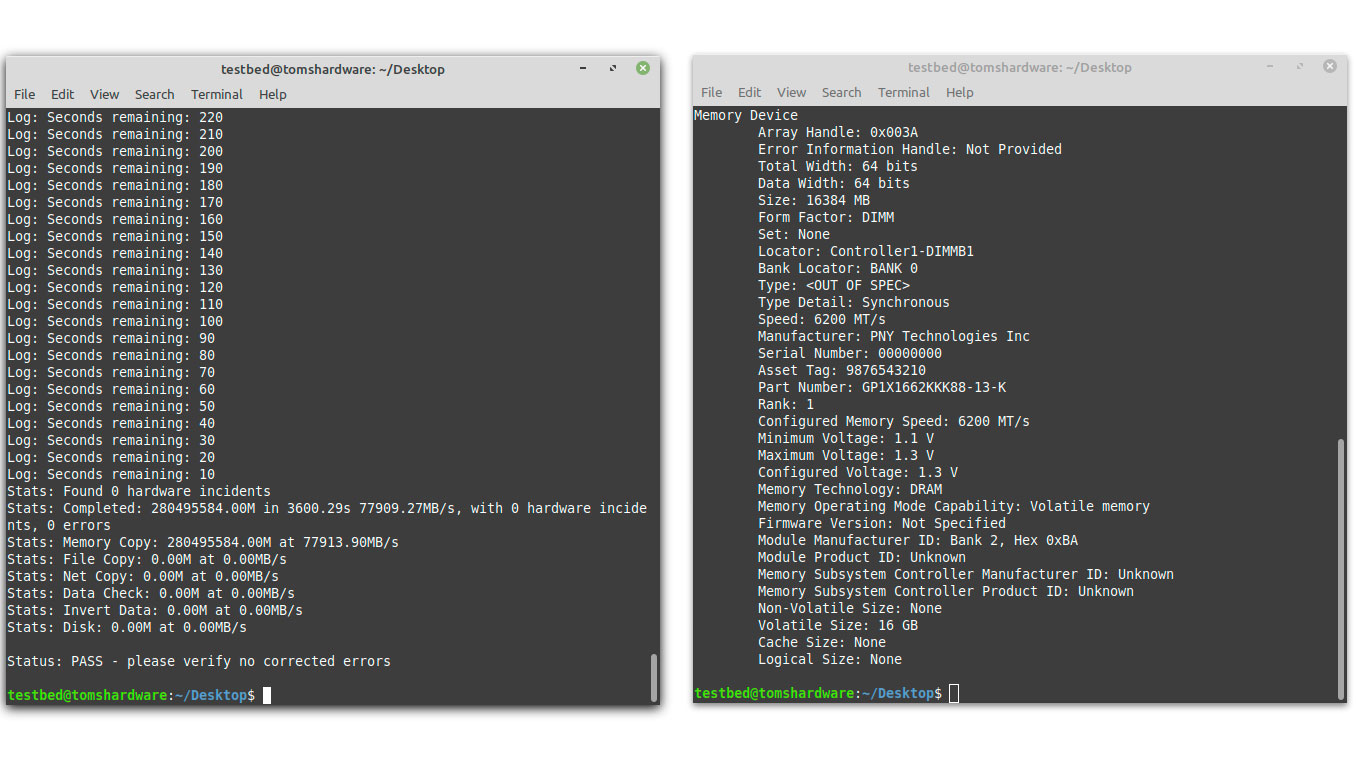
The Mako memory uses SK hynix M-die ICs, similar to other DDR5-6200 memory kits. Therefore, it was easy to achieve a DDR5-6400 overclock at 1.4V. In addition, we could run the memory with 36-38-38-76 timings, the same configuration as Mako's rivals.
Lowest Stable Timings
| Memory Kit | DDR5-6200 (1.4V) | DDR5-6400 (1.4V) |
|---|---|---|
| Patriot Viper Venom RGB DDR5-6200 C40 | 36-37-37-76 (2T) | 36-38-38-76 (2T) |
| V-Color Manta Xprism DDR5-6200 C36 | 36-37-37-76 (2T) | 36-38-38-76 (2T) |
| PNY XLR8 Gaming Mako DDR5-6200 | 36-38-38-78 (2T) | 36-38-38-76 (2T) |
When you run hardware outside of the manufacturer's specifications, there's always a potential risk of damage. That's the standard caveat with overclocking any hardware, not just memory. Although we've already reached out to SK hynix to inquire about the maximum safe voltage for its ICs, we haven't received any feedback on safe voltages for overclocking. However, after speaking with various memory vendors, they've agreed that 1.4V is the maximum voltage you would want to pump into DDR5 for an extended time.
Although PNY has opted for SK hynix M-die ICs, there's still a bit of silicon lottery regarding overclocking. For example, we could tighten the memory timings to 36-38-38-78 at 1.4V on the Mako, whereas the tRCD and tRP can go as low as 37 on the Viper Venom RGB DDR5-6200 C40 and Manta Xprism DDR5-6200 C36.
Bottom Line
The XLR8 Gaming Mako DDR5-6200 C42 prioritizes compatibility in the memory module's design and incorporates multiple XMP 3.0 profiles. While most high-speed DDR5 memory kits only come with a single profile, PNY's memory offers you two additional choices. Veteran users may find it redundant, but it's nice to have in case less experienced users happen to own a processor that can't do DDR5-6200. The out-of-the-box performance on the PNY XLR8 Gaming Mako DDR5-6200 C42 is average unless you manually optimize or overclock the memory.
The memory kit presently retails for $269.99 at multiple retailers. However, the price won't favor the memory and will scare off potential suitors. For example, the Vengeance RGB DDR5-6000 C36, which outperforms the XLR8 Gaming Mako DDR5-6200 C42, sells for $270. Alternatively, the Venom RGB DDR5-6200 C40, which is also faster, carries a $239.99 price tag, $30 cheaper than the PNY memory kit.
If the pricing for the XLR8 Gaming Mako DDR5-6200 C42 improves, it could be a legitimate contender for anyone on the market for low-profile DDR5 memory or anyone who loathes RGB.

Zhiye Liu is a news editor, memory reviewer, and SSD tester at Tom’s Hardware. Although he loves everything that’s hardware, he has a soft spot for CPUs, GPUs, and RAM.
